
by Dr Manjir Samanta-Laughton | Aug 12, 2020 | Punk Science, Science
What creates Saturn’s rings?
Did you know that scientists still don’t know what created the rings of Saturn?
In this episode, we look at the data from the Cassini probe to see if it can shed light on this enigma.
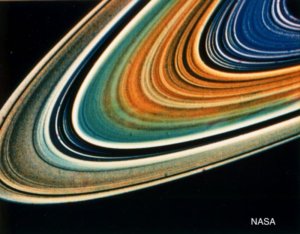
A cosmic mystery
First spotted by Galileo, Saturn’s rings are a source of fascination for human beings. So it seems strange that after all this time, we still don’t know how they were created.

Galileo was thought to have first viewed Saturn’s rings
Cassini’s mission
Thanks to the Cassini missions we have now visited Saturn’s rings and found a few more details.
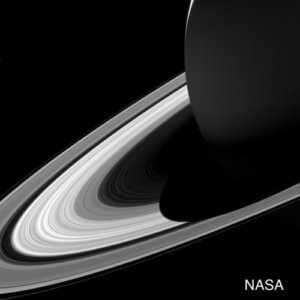
Because the rings are very bright and reflective, scientists have concluded that they are younger than the planet Saturn itself because there hasn’t been enough time for dust particles to decrease this reflectivity.
Was it a collision?
One of the best explanations that scientists have come up is – a collision! Yes, just as in previous examples discussed on this site, when they don’t have an explanation for an observed phenomenon they conclude that it is a collision or an explosion.
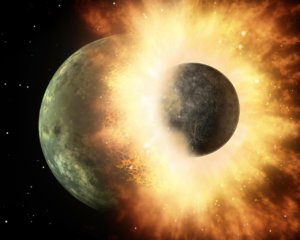
12019 / Pixabay – Planetary Collision
Can the Black Hole Principle provide the answer?
According to The Black Hole Principle, creation is happening at every single level coming in from infinite light all the way through to our reality below the speed of light.

The Black Hole Principle
As I have said on this site many times before, this also creates water and organic compounds such as methane.
It woz Saturn!
So the short answer is Saturn itself is creating the rings. Just as a black hole in a galaxy creates spiralling material.
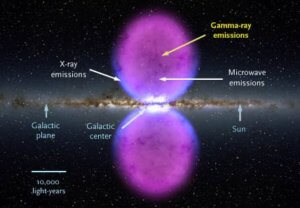
Jets from the Milky Way create gamma-ray and X-ray bubbles Credit: NASA
Saturn also is a black hole that creates water which then freezes. We have discussed before how The Black Hole Principle creates water and Saturn is no different.
The organic material created by The Black Hole Principle process within Saturn is why the inner rings have more organic material than the outer before it dissipates and also why the rings are moving so fast – this is material being ejected from Saturn.

Saturn’s spiralling rings
The Geometry of Creation
So why doesn’t every planet have rings? Each level of the Black Hole Principle expresses itself differently. It is all part of the one ultimate spiral of light – so each particle and planet is just somewhere on the spectrum of this one ultimate spiral.
What determines how it will behave? Geometry!
And if you have any doubt that geometry and mathematics are fundamental to the universe – just look at Saturn’s Hexagon at its pole.
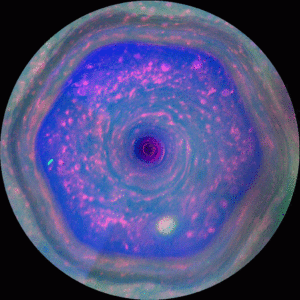
Geometry causes each level to behave in a different expression of the one pattern. In the case of Saturn, the underlying geometry creating it is beautifully staring at us.
I hope you found this episode of Punk Science TV and the article interesting. Please leave a comment below and tell me what you think

by Dr Manjir Samanta-Laughton | Apr 1, 2020 | Punk Science, Science
Oil, coal and other hydrocarbons have been found all over space. But we think that these substances are fossil fuels. so how did they get there?
Why is there oil on Saturn’s moon, Titan?
Some years ago it was discovered that one of Saturn’s moons called Titan harboured masses of organic chemicals – effectively it’s a massive oil field.
It has more oil than we have on planet earth it even rains down hydrocarbons! In fact, hydrocarbons which are supposed to be the molecules of life, are found all over space. Scientists have even found oil on Mars.
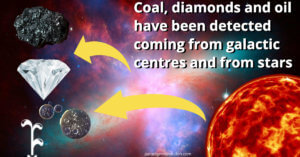
And the biggest oil field ever discovered exists in the far reaches of space. Not only that but coal has also been found coming out of stars.
It causing some people to find a way to mine the resources in space which is actually a rapidly growing industry. But why are oil and coal there in the first place?
Fossils in Space?
Oil and coal are supposed to be fossil fuels created from long-dead trees and marine life.
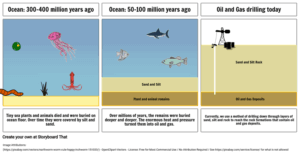
There are no trees or marine life on Titan or Mars on stars or outer space so what is going on?
Upwelling theory
A big clue came from Physicist, Thomas Gold who wrote in his book, The Deep Hot Biosphere that the pattern of distribution of oil and coal on Earth fits an upwelling origin – which means that oil and coal are coming up from the deep and not sinking down from the surface.
It really is an excellent book that exposes that many of our ideas about fossil fuels and how they are created just do not stack up to the evidence. Gold was not the first to propose this idea; Russian scientists did so too.
Oil from Black Holes
I am proposing that the reason we see hydrocarbons all over space is that they are being produced by the Black Hole Principle.
According to this theory, Mars, Titan and even the Earth are prolific in producing oil from their interior.
But for the theory to be correct, we need to spot hydrocarbons coming out of black holes.
And indeed we do see greasy molecules from galactic centres.
A radical new theory that fits the evidence
So you heard it first on Punk Science TV – Fossil fuels are not fossils but created by the interiors of black holes, stars, planets, moons and even comets – that’s why comets are covered in hydrocarbons.
If you want to know more about how the universe really works then follow me on Facebook or Youtube for more Punk Science TV
Further reading
Fossil fuels and black holes
Methane on Mars
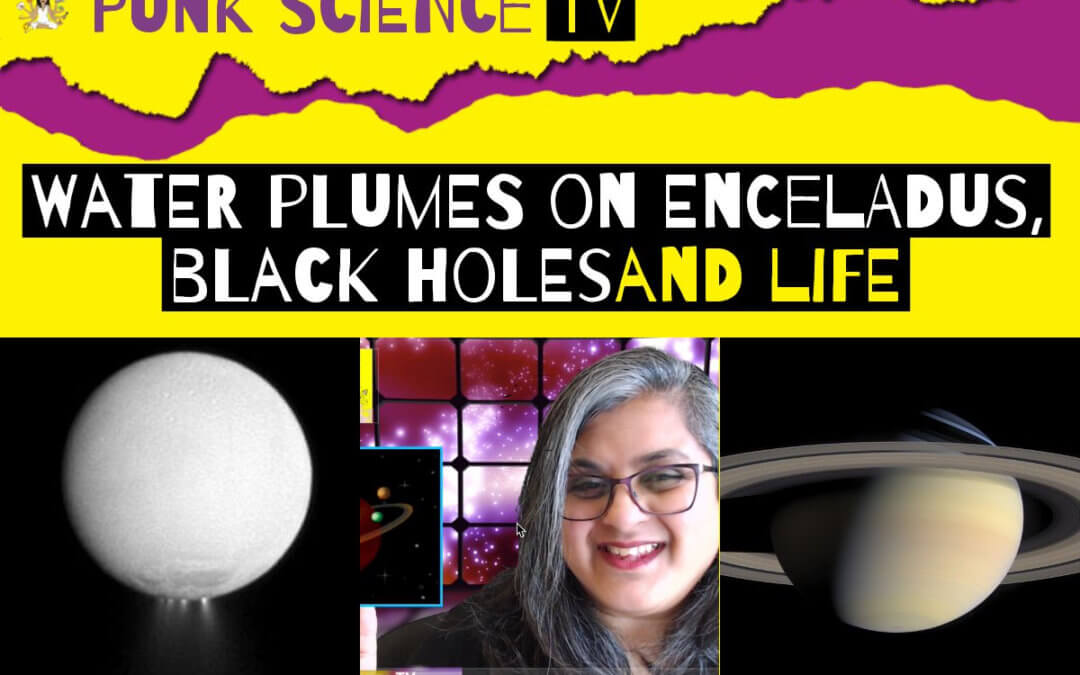
by Dr Manjir Samanta-Laughton | Jan 22, 2020 | Punk Science, Science
Saturn’s moon, Enceladus is producing massive water plumes as well as organic molecules. But does this indicate life is on Saturn’s moon?
Shock Geysers
When massive water geysers were found on Saturn’s moon Enceladus – it was a bit of a shock. These activities were explored by the Cassini probe which also found complex organic chemicals.
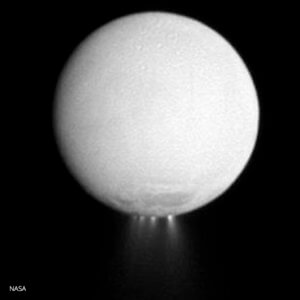
Credit: NASA
Scientists seem to think that all that is needed to create life are water, organic molecules and energy despite the fact that just one DNA molecule being created randomly has massive odds stacked against it.
But that’s another story.
Let’s just say the possibilities exist for life on other worlds.
But is it life?
Conditions ‘for life’ are now being found all over the solar system like on Enceladus. Does this mean that life exists there?
Not necessarily.
Enceladus is giving off plumes of water and complex organic molecules. The plumes of water are being powered by the Black Hole Principle – just as they power jets of water in galactic black holes.
Powered from the inside
It’s the same mechanism powering the water jets all the way down at each level, creating intermittent plumes and jets of water.
And I have discussed before, the same principle is responsible for the organic molecules in planetary ejections such as methane from Mars. In fact, we have been finding complex organic molecules coming out of the centres of galaxies just as we would expect if black holes are creating them.
So all this could be created in processes that is devoid of life as we know it. However,
This doesn’t mean necessarily that biological alien life is not on Saturn’s moon, Enceladus as it could also be there as well as displaying Black Hole Principle behaviour.
Do you think we need more evidence before declaring ‘life’ on other worlds?
Please leave a comment below.
















